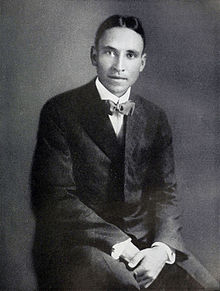Edmund Newton Harvey
| E. Newton Harvey | |
|---|---|
 |
|
| Born | Edmund Newton Harvey November 25, 1887 Germantown, Pennsylvania |
| Died | July 21, 1959 (aged 71) Woods Hole, Massachusetts |
| Nationality | American |
| Fields | Zoology |
Edmund Newton Harvey (November 25, 1887 – July 21, 1959) was an American zoologist. He was acknowledged as one of the leading authorities on bioluminescence. He won the Rumford Prize in 1947 and was a member of the National Academy of Sciences.
Harvey was born on November 25, 1887 in Germantown, Pennsylvania. He was the only son and fourth child of a minister in Philadelphia who died when he was six years old. His interest in natural history was exhibited at an early age and he liked collecting things and spending as much time as possible in the countryside. He was educated at Germantown Academy followed by the University of Pennsylvania where his interest in science excluded most of the social activities enjoyed by his contemporaries. He then moved to New York where he started his doctoral research under the evolutionary biologist Thomas Hunt Morgan at Columbia University.
In 1913 Harvey went on an expedition to the South Pacific with Alfred G. Mayer, a retired professor from the University of Pennsylvania. It was probably on this trip that he became interested in bioluminescence, and later that year he wrote a paper "On the chemical nature of the luminous material of the firefly". In 1916 he married a marine biologist, Ethel Nicholson Browne, and during their honeymoon in Japan he became fascinated by the bioluminescent ostracod Vargula hilgendorfii. This could be dried and would emit blue light when remoistened. He had large quantities of it shipped back to the United States where he devoted the next thirty years to studying the phenomenon of bioluminescence, and the chemical reactions involved in the process, in the ostracod and various other bioluminescent organisms. He discovered that the light-emitting substances known as luciferins were acted on by enzymes called luciferases and that both were species specific and not interchangeable.
...
Wikipedia
